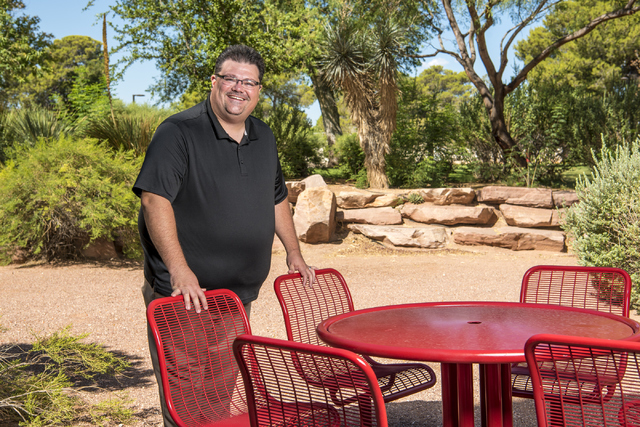The theory that was proved correct and put Dr. Dipak Desai behind bars

To deal with the stress of his work days in early 2008, he’d go home and flail away on his drum set.
Working 80-hour weeks to figure out what caused the largest hepatitis outbreak in the history of the United States — and how to deal with it — wasn’t easy.
Yet Brian Labus, then a 33-year-old epidemiologist with the Southern Nevada Health District, always came across as unflappable.
On February 27, 2008, after announcing at a news conference that tens of thousands of Southern Nevadans would have to be tested for hepatitis C and HIV, the young man who’d never been the focus of public attention would find himself thrust into the public eye for years.
His “serial contamination theory ” of how the outbreak occurred, unprecedented in medical circles, would be supported by top physician/researchers with the U.S. Centers for Disease Control and Prevention.
Given the large number of civil and criminal cases associated with the outbreak — his testimony would be duly recorded by the media — Labus’ time in the spotlight didn’t really end until three years ago Friday.
It was on July 1, 2013, that a jury convicted Dr. Dipak Desai of murder and nurse anesthetist Ronald Lakeman of criminal neglect in connection with the outbreak that has killed two people so far and infected 105 others.
Now a 41-year-old professor in UNLV’s School of Community Health Sciences — he left the health district last year — Labus works in a windowless office about the size of a Honda Civic. But it’s not as comfortable. There is no indication that newspaper and TV news outlets from across the country and around the globe once led newscasts with his remarks.
“I’d like to teach students to do what I once did,” said Labus.
That’s a tall order.
He made a hard job — communicating what happened in an outbreak so the public can understand it — look easy.
After of cluster of hepatitis C cases was found to have come from Desai’s clinic, Labus and other investigators went to the clinic in January 2008 to try and find out what happened.
What they saw at the clinic eventually became Labus’ “serial contamination theory.”
A nurse would administer an anesthetic to a patient before a colonoscopy. If the patient started to wake up, the nurse used a syringe to draw more of the drug from the vile, using a fresh needle but reusing the syringe, thereby allowing the vial to become contaminated with the patient’s blood.
And then nurses, who later said Desai instructed them to act this way to save money, used that same contaminated vial to draw the anesthesia that would be administered for the next patient.
If the nurses filled a syringe from multiple vials, including a contaminated vial, that contamination could be passed on to other vials and ultimately to patients.
“My theory really wasn’t anything more than logic supported by observations,” Labus said.
Labus said he had gained confidence in his detection abilities after working on two Norovirus outbreaks in 2004 that saw nearly 4,000 people become ill after eating at Strip buffets. The virus causes people to have severe vomiting and diarrhea.
“We convened a summit of health experts and the resort community,” he said. “Cleaning products and procedures were changed. … We haven’t had a major outbreak since,” he said. “And our recommendations are used around the country.”
As the hepatitis C outbreak became public, Labus drove around town asking himself questions he thought he might get from reporters.
“And I answered them aloud,” he said. “There were few questions I had to answer that I had not thought through.”
There was only one question that Labus couldn’t answer at the initial 2008 news conference on the outbreak.
One of mine.
“Are the people who did this to their patients sociopaths — people without a conscience?” I asked.
“I’ll have to pass on that,” Labus said then, and now.
I don’t have to pass.
They‘re sociopaths.
Paul Harasim’s column runs Sunday, Tuesday and Friday in the Nevada section and Thursday in the Life section. Contact him at pharasim@reviewjournal.com or 702-387-5273. Follow @paulharasim on Twitter.